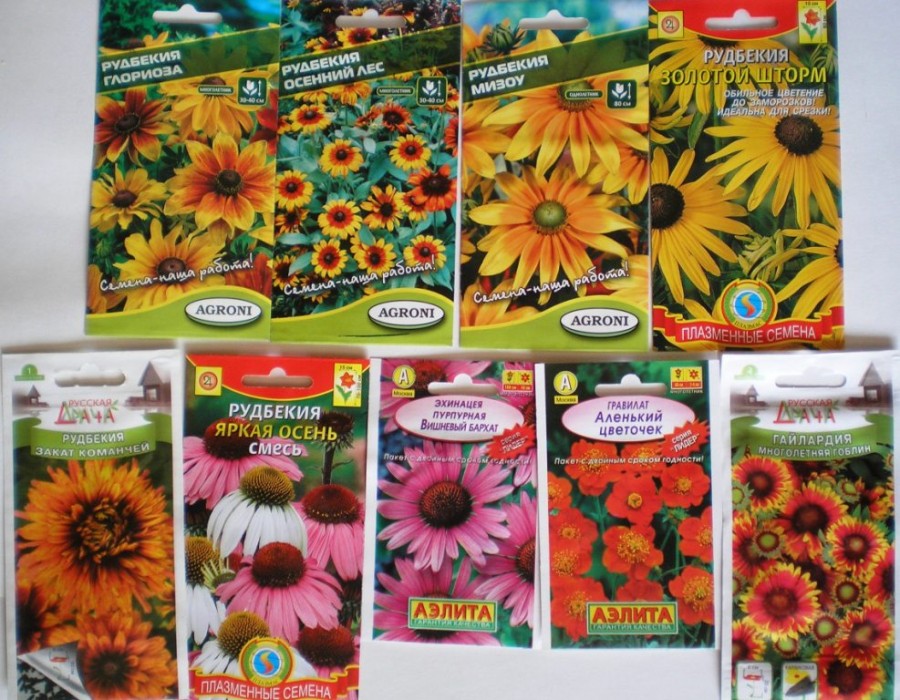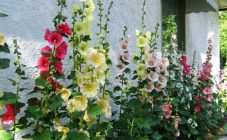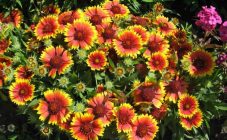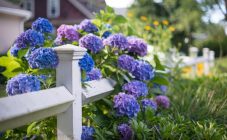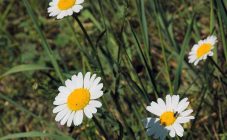Many gardeners plant in their summer cottages not only fruitful crops, but also flowers, because they are pleasing to the eye and ennoble the site. However, most varieties of flowers require a lot of attention and time, which is always short. For those gardeners who want to ennoble the site without spending too much time, perennials are suitable. Typically, these varieties bloom from early summer to late autumn. For novice gardeners, perennial rudbeckia is ideal; planting and caring for this flower does not require special knowledge and effort. But it is worth understanding how rudbeckia multiplies and how to care for it.
Rudbeckia: growing from seeds and seedlings
Perennial tolerates winter well in southern and central Russia, regardless of weather conditions, it is well accepted. In order for a beautiful strong rudbeckia to grow, the seeds can be collected in the autumn on their own or purchased in the store and prepared.
When growing this species, it is important to control soil moisture. This flower does not like strong moisture; there should be no stagnant water in the soil. To keep moisture at an optimal level, it is recommended to mulch the soil. Sometimes the perennial will need to be fed. It is advisable to do this in autumn.
It is advisable to rejuvenate and replant the bushes every few years, they age and the flowers become much smaller.
How to care for a plant
Rudbeckia is unpretentious, therefore planting and care in the open field does not require much time and effort. The needs depend on the season of the year and the characteristics of the species. There are many varieties of this variety:
- Amber,
- Goldshire,
- Meine Freude,
- Golden ball,
- White swan, etc.
Rudbeckia: reproduction
Reproduction is possible in two ways:
- seeds,
- saplings.
If seedlings are used for growing a flower, planting should be done at the end of May. Before planting seedlings, you need to prepare the soil. The perennial takes root well in any soil, even in clay. But before planting seedlings in clay soil, you will need to cover the site with gravel and sand.
If the soil is acidic, dolomite flour should be added to the soil. Compost is required in depleted soil. After the place is prepared, you can dig holes. The distance between the holes should be about 25-30 centimeters, the depth should be 15-20 centimeters. It is recommended to plant in sunny weather, in the ground with medium humidity. After planting the seedlings, the earth is tamped and mulched around.
How to grow rudbeckia from seeds? Similarly: sow seeds in soft fertilized soil, if there is a threat of a cold snap, cover with a special material until the threat passes.
After the seedlings or seeds are taken in, water well and remove the weeds around. Then they will grow strong and tall.
When to sow perennial rudbeckia? Spring is considered the best time to plant seeds, but planting is done at the beginning and in the middle of summer. You should adhere to the same distance as when planting seedlings.
In the summer, perennials are more demanding to care for. The seedlings need to be watered. Watering frequency depends on soil type and climatic conditions. It is undesirable to flood seedlings, as they do not like high humidity. In the summer, you need to get rid of weeds on the site, as they slow down growth and deplete the soil. In addition, weeds can become the causative agent of plant infestation with various diseases.
The plant needs to be fed even in summer. You should not do this too often, as excess fertilizer negatively affects the stems and leaves. In order for the fertilizers to be better absorbed, you must first loosen the soil. The softened earth helps the flower grow faster.
In addition to all of the above, in the summer, the likelihood of infection of the plant with various diseases is higher; in the summer it is more susceptible to the effects of insects. Therefore, several times per season it is necessary to carry out prophylaxis and treat the bushes with special means from pests.
Autumn does not bring much trouble to the gardener with flowers, you just need to prepare the perennial for winter. Even a cold winter will not harm the flower if you cover it well. Before this, it is required to collect seeds, otherwise the rudbeckia will grow strongly.
Rudbeckia multiplies quickly, and so that it is not cramped, the flower needs to be planted. After which it is cut off, you should try to cut the bush to the very root. You need to prune with special scissors or pruners so as not to damage the plant. After pruning, the land must be mulched. Only after all this can the bushes be covered, dry grass or foil can be used for this. They can be opened only when the temperature is above zero.
Flower care includes:
- Top dressing. The soil should be enriched as needed, depending on the planting site and soil type. Basically, feeding is done in the spring and during the appearance of buds. After planting with seeds, it needs good feeding. Also, if the land is clayey or depleted, you should enrich the land also in the middle of summer. You need to use mineral fertilizers, which include phosphorus, potassium and nitrogen. You can also use organic fertilizers such as mullein, wood ash, or herbal solution. In the autumn, it is better to use phosphorus-potassium fertilizer, it helps the plant to better endure the winter.
- Pruning. After the flowers begin to wither, they need to be removed. It is necessary to cut off to the first healthy leaf. This is essential for the flowering of the plant. Also, the perennial must be cut in late autumn, at the root. This is required so that it can be covered for the winter.
- Mulching... Mulching the area is necessary in order to protect the soil. For mulching, you can use hay, straw, peat, walnut peels, sawdust, leaf humus, film. The mulch layer should be about 8 centimeters. The procedure can only be carried out in warm weather, when the ground is still warm.
- Protection from pests and diseases... Perennial is quite resistant to many types of diseases and to many pests. But, despite this, the threat of infection exists, which is why sometimes the bushes need to be treated from pests and diseases. Before carrying out the treatment, it is important to find out what exactly the plant got sick with or what insect struck it. Only then can any action be taken. Processing should be carried out on clear days so that the substance does not wash off during rain. To prevent infection, prevention should be carried out, especially if it rained for several days in a row or if there is an affected plant nearby.
- Topping. It is required to carry out in order for the plant to bloom more abundantly. The procedure should be carried out at the beginning of summer, since at this time the stems and leaves are still soft, it is not difficult to remove them.
- Watering... The plant does not tolerate an excess of water, so it is necessary to water it only when the ground dries up a little. At first, perennial rudbeckia is weak, planting and transplanting weakens it. Therefore, at first, watering is required with warm water, cold water will complicate the process of making a plant.
- Transfer... Held in summer and autumn. To transplant, you need to dig out the rhizomes, divide them and plant them in a new place.
Gardening tips
Experienced gardener tips for caring for a soda patch:
- In spring and summer, the bushes should be watered in the morning. In the fall you need to water in the evening.
- To prolong flowering, seeds should be harvested while they are still starting to form. During this period, the plant spends all its energy on seed formation.
- In autumn and spring, it is imperative to remove all spoiled leaves and stems.
- In July, you need to be especially careful about the garden area. It is during this period that pests are activated.
- The plant needs to be renewed every 2-3 years. To do this, you need to dig up a bush and divide its root into several parts with a shovel. Then plant them elsewhere. This is important for color.
If you follow all these recommendations, the perennial will delight the eye for a long time.
Perennial rudbeckia is very beautiful, while not demanding, cultivation is allowed even in regions with unfavorable soil and climate. In order for the plant to bloom beautifully and for a long time, it is necessary to feed it, remove weeds on the site and cut off the excess. Knowing how to plant rudbeckia and how to transplant rudbeckia in the summer, you can always have a colorful flower garden on the site.

